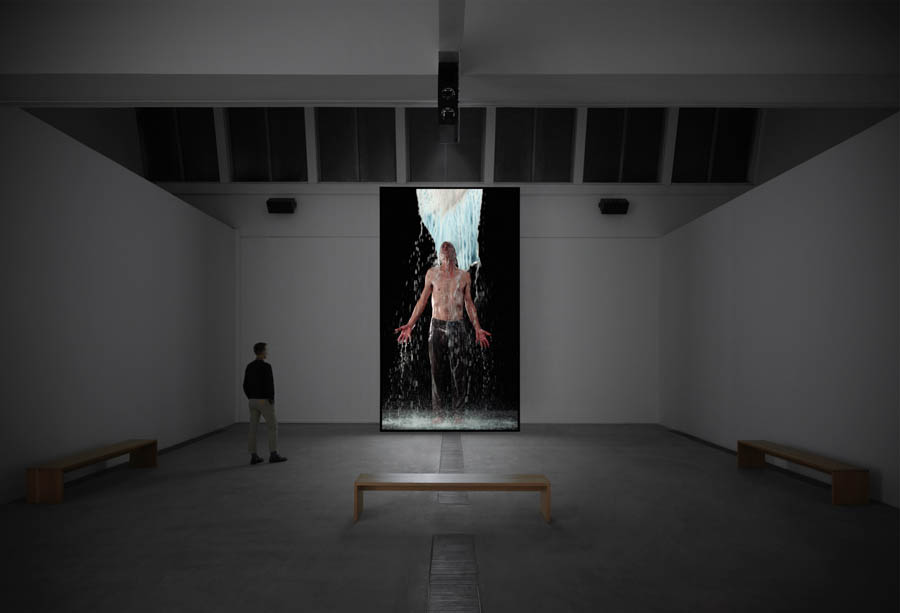
The history of video art is still relatively short, emerging in the 60s and 70s along with the rise of television's ubiquity. But video art tends to be a far cry from the sitcoms, commercials and movies that we associate with the 2D medium.
Bill Viola has been a creating video art for decades now, a leading figure alongside of Nam June Paik and Bruce Nauman. His work continues to draw accolades from audiences and critics alike. Inverted Birth premiered recently at Beijing's Faurschou Gallery, a piece that embodies much of Viola's work.
The video is shown on a 5 meter high screen. A standing man is barely discernible in the dark, the sound of dripping echoing through the room. The drips come progressively faster, and viewers can eventually discern black drops flying upwards from the ground to the figure's hanging arms. A roar creeps in, and then the fluid begins rushing off the man upwards in a slow motion torrent, disappearing out of frame above. Over the next 5 minutes, the water changes from black to red to white to clear before disappearing skywards, leaving the man at rest, eyes open, with mists slowly drifting about his head.
Water features in much of his work, an influence from when he almost drowned as a child. In keeping, much of Viola's work deals with grand scale ideas of life, death, and spiritual rebirth. The piece The Raft features an assortment of people standing as if waiting for a bus. Viewers tune into their minute interactions, each magnified by the decelerated pace. A narrative structure seems about to surface when suddeny the group is assaulted en masse by water torrents, leaving them weeping, defeated. Issues of police control or global warming may be reference points, but the underlying message is one of humanity indiscriminately suffering together.
Viola's installation Martyrs features four figures on four walls, each tormented by an element of earth, wind, water, or fire. One man starts out in a heap on the floor before a rope slowly begins pulling him up by the ankles, and water eventually cascades down upon him from above. At one point, he stretches his arms outwards, just enough to reference a crucified Jesus.
The three works are the entirety of the exhibition, but they are well-worth visiting. Video art can be challenging because it often requires patience to appreciate (and much of it may be disappointing). But Viola is a master of his craft, his works compelling, provocative and mesmerizing. To see his work exhibited in Beijing is a rare opportunity.





